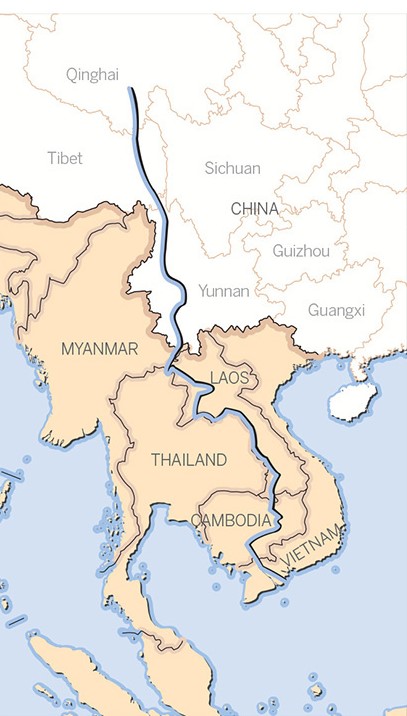Last Major China-Laos Railway Tunnel Completed On Lancang-Mekong Corridor
How The Mekong River Is Becoming A Significant South-East Asian Trade Corridor
Op/Ed by Chris Devonshire-Ellis
The last significant tunnel to be bored to complete the China-Laotian Railway was completed on March 15th, with track now being laid at a rate of 2km per day, despite the on-going Covid-19 situation. The route is part of the Lancang-Mekong Corridor (LMC) and Economic Belt, focusing on synergies between China, Cambodia, Laos, Myanmar, Thailand and Vietnam. The Mekong River (known as the Lacang in China) runs through each of these six countries. The fast pace of track laying will mean the railway is now expected to be completed in December 2021, seven months ahead of schedule.
The Mekong River is the heart and soul of mainland Southeast Asia. The 12th longest river in the world, the Mekong runs 4,800 kilometers from its headwaters on the Tibetan Plateau through Yunnan Province of China, Burma, Thailand, Cambodia, Laos and Vietnam. It is the largest river in Southeast Asia, and forms the border between Laos and Myanmar and most of the border between Laos and Thailand before spreading out into the massive Mekong delta area of Vietnam, prior to disgorging into the South China Sea.
The LMC is focused on trade connectivity/facilitation to link the LMC with the New International Land-Sea Corridor, which extends from China to Europe. The LMC is designed to enhance the facilitation of trade and customs clearance and to promote cooperation on regional industrial capacity, cross-border economy and industrial parks, and has been supported by the US$300 million Lancang-Mekong Cooperation Special Fund, designed to finance a number of smaller, supporting projects in the region.
The LMC has also been tasked with the promotion of Mekong water resources and agricultural cooperation, while commercial developments are managed as part of the China-ASEAN Free Trade Area. A variety of joint venture cross-border development zones are expected to be announced along the LMC route, which runs for 4,350km and will see 795,000km of land drained and re-purposed for agricultural use.

The Lacang-Mekong River Route
The crucial Laos connectivity was enhanced in January this year when China’s President Xi Jinping met with Laotian Prime Minister Thongloun Sisoulith in meetings designed to accelerate the construction of the China-Laos Economic Corridor (CLEC). Agreements signed included direct settlement of the Cambodian Kyat with the Chinese RMB in transactions under all open current and capital accounts.
Border towns running along the Mekong will start to realize commercial booms as the LMC corridor takes effect. These include:
- China: Yunnan Province: Pu’er, home of the famous tea
- Myanmar: Shan State: Wan Pasak
- Laos: Vientiane, the capital city
- Thailand: Nong Kai, on the border with Laos
- Cambodia: Phnom Penh, the capital city
- Vietnam: Can Tho, the heart of the river delta
Foreign investors should be looking at these specific cities and regions to take advantage of the increased trade opportunities the LMC will bring to Southeast Asia.
Related Reading
- China’s Hongshi Issues First Belt Road Bond in Shanghai for Laos Project
- China Reduces Import Taxes At Cross-Border Free Trade Zones
- Investing In Emerging Belt & Road Initiative Stock Markets: South-East Asia
About Us
Silk Road Briefing is written by Dezan Shira & Associates. The firm has 28 offices throughout Asia, and assists foreign investors into the region. For strategic advisory and business intelligence issues please contact the firm at silkroad@dezshira.com or visit www.dezshira.com





